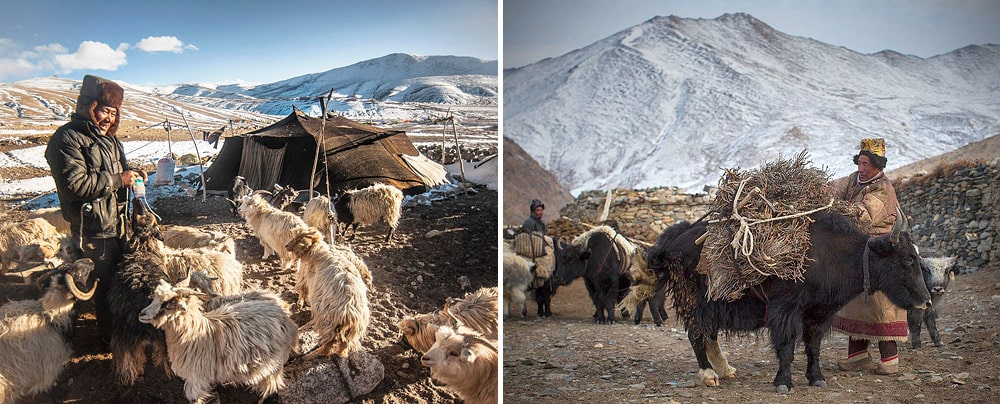Description

Copyright infringement not intended
Picture Courtesy: https://www.lehladakhtaxis.com/travel-guide/tso-moriri-lake/changpa-nomads
Context: Climate activist Sonam Wangchuk and Leh Apex Body called off the border march aimed at highlighting the Changpa nomadic tribes' plight.
Details
- Sonam Wangchuk, a prominent climate activist, along with the Leh Apex Body (LAB), were forced to cancel their planned march to the border in Ladakh.
Why Was the March Planned?
The proposed march aimed to bring national attention to the plight of the Changpa nomads. These indigenous communities rely on vast grazing lands for their herds, but these lands are being squeezed from both sides:
- Chinese Incursion: The nomads claim to be losing territory in the north due to Chinese encroachment across the border.
- Corporate Activity: They also face pressure from corporations operating in the south, further restricting their access to traditional grazing grounds.
Government Response
The Ladakh administration, under the Lieutenant Governor, took strong measures to prevent the march, raising concerns about freedom of expression and peaceful assembly:
- Section 144 enforced: This law prohibits gatherings of more than four people, effectively suppressing any public demonstration.
- Internet Curbs: Limiting internet speed hinders communication and mobilisation efforts.

Why decided to Cancel?
- Feared Violence: The tense atmosphere could lead to violence, which the organisers wanted to avoid.
- Message Delivered: They believed the media coverage surrounding the planned march had already achieved its goal of raising national awareness about the Changpa nomads' situation.
Changpa Tribes
- The Changpa are a semi-nomadic Tibetan ethnic group predominantly found in the Changtang region of Ladakh, India.
- They have a unique lifestyle centred around high-altitude pastoralism, herding mainly yaks and goats.
Geographical Distribution and Lifestyle
- Changtang Plateau: Changpa's homeland is the Changtang Plateau, which spans western and northern Tibet, extending into southeastern Ladakh. This region is characterised by high altitudes and harsh, arid landscapes, making it unsuitable for farming but ideal for nomadic pastoralism.
- Protection of Nature Reserves: Much of the Tibetan Changtang is now protected within nature reserves, including the Changtang Nature Reserve, one of the largest in the world. These reserves cover vast areas, promoting conservation efforts and providing habitats for endangered species.
- High Altitude Pastoralism: The Changpa of Ladakh are high-altitude pastoralists, herding yaks and goats for their livelihood. They have two main groups: the nomadic Phalpa, who roam with their herds, and the sedentary Fangpa, who reside in settled villages. Despite their different lifestyles, both groups maintain cultural and social ties, including intermarriage.
Cultural and Linguistic Identity
- Language and Religion: The Changpa people speak Changskhat, a dialect of Tibetan, and practise Tibetan Buddhism. Their culture is deeply rooted in Buddhist traditions, influencing various aspects of their daily lives, rituals, and festivals.
- Historical Connections: The Changpa have a long-standing history of migration and trade between Ladakh and Tibet. They traditionally traversed routes connecting the two regions, facilitating cultural exchange and commerce. However, political changes, such as the Chinese takeover of Tibet, have impacted these historical connections.
Economic Significance of Changra Goats
- Pashmina Production: One of the key economic activities of the Changpa is the rearing of Changra goats, prized for their high-quality Pashmina fibre. Pashmina, also known as Cashmere, is a luxurious and highly sought-after material used in textiles and fashion.
- Livelihood and Sustainability: Rearing Changra goats and harvesting Pashmina fibre form the primary source of livelihood for many Changpa families. They rely on the sale of Pashmina products, including milk, fibre, and meat, for sustenance and income.

Recognition and Reservation Status
- Scheduled Tribe Classification: The Indian government recognizes the Changpa as a Scheduled Tribe, entitling them to benefits under affirmative action programs aimed at socio-economic development and empowerment.
Conclusion
- The Changpa people have a rich cultural heritage shaped by their nomadic lifestyle, Buddhist beliefs, and economic activities such as Pashmina production. Despite facing challenges such as environmental changes and geopolitical shifts, they continue to maintain their unique identity and traditions in the high-altitude landscapes of Ladakh and Tibet.
Must Read Articles:
Protests in Ladakh
Ladakh, Article 371, and the Sixth Schedule of the Constitution
Pashmina
Source:
Wikipedia
The Hindu
|
PRACTICE QUESTION
Q. Consider the following statements in the context of the Changpa Tribes:
1. The Changpa are a semi-nomadic Tibetan ethnic group predominantly found in Arunachal Pradesh.
2. They have a unique lifestyle centred around high-altitude pastoralism, herding mainly yaks and goats.
3. They have two main groups: the nomadic Phalpa, who roam with their herds, and the sedentary Fangpa, who reside in settled villages.
4. The Changpa people speak Changskhat and practise Tibetan Buddhism.
5. One of the key economic activities of the Changpa is the rearing of Changra goats.
How many of the above statements are correct?
A) Only two
B) Only three
C) Only four
D) All five
Answer: C
|












